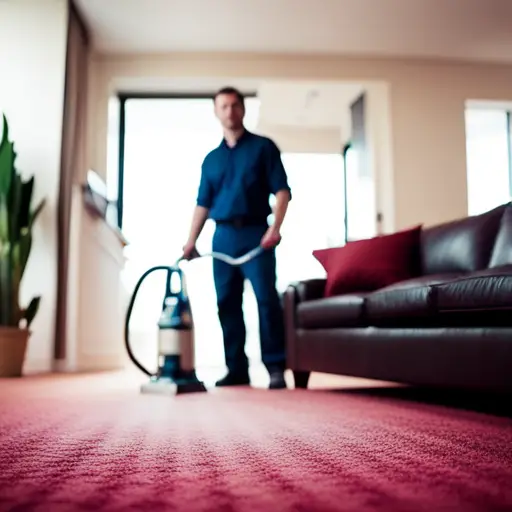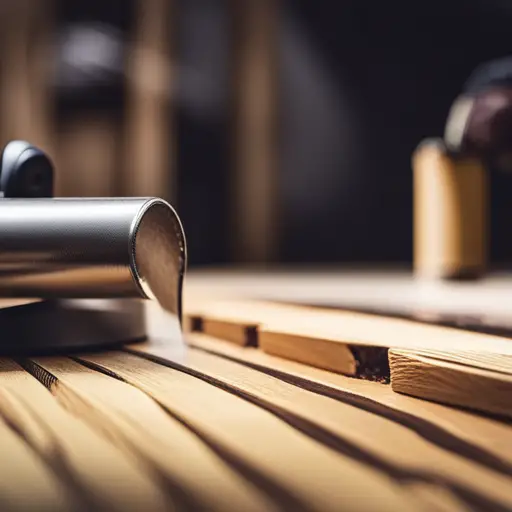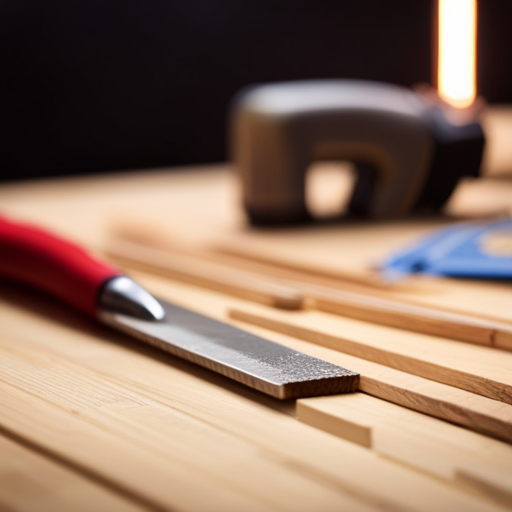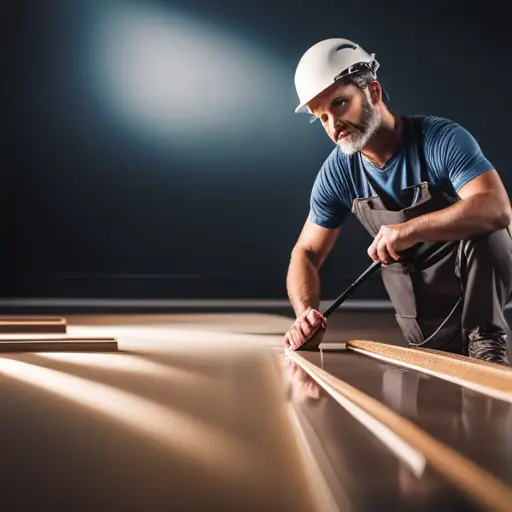Preventing and Repairing Sun Damage on Floors
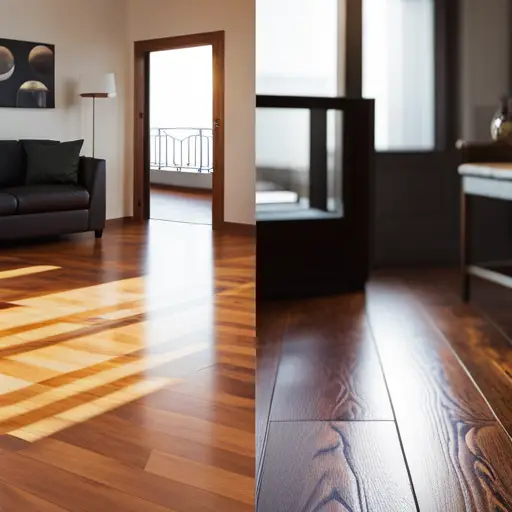
As the sun’s rays gently caress our homes, they also pose a threat to the longevity and appearance of our floors. From fading to discoloration, sun damage can take a toll on the beauty and integrity of flooring materials.
In this article, we will explore effective strategies for preventing and repairing sun damage on floors. These strategies include selecting sun-resistant flooring, utilizing window treatments, implementing protective coatings, and seeking professional restoration services when needed.
Understanding Sun Damage
The sun damage on floors can be attributed to prolonged exposure to UV radiation, leading to discoloration and deterioration of the surface.
Understanding UV exposure is crucial to preventing discoloration and damage to floors. Ultraviolet (UV) rays from the sun can penetrate windows and gradually cause fading and discoloration of various flooring materials, including hardwood, laminate, and carpet.
It is important to note that while all flooring materials are susceptible to sun damage, certain types of wood, such as cherry and oak, are more prone to discoloration. Understanding the specific vulnerabilities of different materials to UV exposure is essential in formulating effective preventive measures.
Implementing strategies such as applying UV-protective coatings or films to windows, using area rugs or furniture to block direct sunlight, and installing window treatments can significantly reduce the impact of UV radiation on floors.
Additionally, choosing flooring materials with built-in UV protection or natural resistance to discoloration can also mitigate the effects of sun damage.
Choosing Sun-Resistant Flooring
When selecting flooring materials, prioritize those with proven resistance to sun damage. Choosing durable materials is crucial for long-term investment, especially in sunny areas where UV rays can cause color fading and deterioration. The table below provides a comparison of common flooring materials in terms of their UV protection and color retention properties:
| Flooring Material | UV Protection | Color Retention | Durability |
|---|---|---|---|
| Hardwood | Moderate | Fair | High |
| Laminate | High | High | High |
| Vinyl | High | High | High |
| Porcelain Tile | High | High | Very High |
It’s evident that laminate, vinyl, and porcelain tile offer superior UV protection and color retention compared to hardwood. Additionally, these materials are highly durable, making them ideal choices for sun-exposed areas. Investing in flooring with high UV protection and color retention ensures that the floors maintain their aesthetic appeal and structural integrity over time, providing excellent value for homeowners in sunny climates.
Positioning and Using Window Treatments
To mitigate sun damage on floors, strategically position and utilize window treatments to control the amount of direct sunlight entering the space. This can be achieved by:
- Choosing suitable curtains, blinds that can be adjusted to block or filter sunlight during peak UV exposure times.
- Utilizing UV blocking films, tints on windows to reduce the amount of harmful UV rays entering the room while still allowing natural light in.
- Installing solar shades that are designed to block UV rays and reduce heat gain without completely obstructing the outside view.
- Using sheer curtains in addition to heavier drapes to provide multiple layers of protection against UV rays while still maintaining an aesthetic appeal.
- Considering window treatments with UV protection properties, such as specially designed fabrics or materials that can help minimize the impact of UV rays on floors and furnishings.
By implementing these window treatment strategies, it is possible to significantly reduce the amount of harmful UV radiation that reaches the floors, thus preventing sun damage.
Now, let’s delve into the next section on implementing protective coatings and sealants.
Implementing Protective Coatings and Sealants
Continuing the efforts to mitigate sun damage on floors, one can further protect the flooring by implementing protective coatings and sealants. UV resistant finishes are essential in preventing sun damage on floors. These finishes act as a shield, protecting the floor from the harmful effects of UV rays. Additionally, maintenance tips such as regular inspections and recoating can help ensure the protective coatings remain effective over time.
| UV Resistant Finishes | Maintenance Tips |
|---|---|
| Provide protection against UV rays | Regular inspections |
| Extend the lifespan of the flooring | Recoating as needed |
| Help maintain the floor’s appearance | Utilize professional cleaning services |
Implementing UV resistant finishes is crucial for preserving the integrity of the floors, especially in areas exposed to direct sunlight. Furthermore, following maintenance tips such as regular inspections and recoating as needed will help maximize the effectiveness of these protective coatings and sealants. Transitioning from protective coatings and sealants, the subsequent section will cover the importance of regular cleaning and maintenance to further prevent and repair sun damage on floors.
Regular Cleaning and Maintenance
The maintenance of UV resistant finishes and protective coatings is imperative to ensure the longevity and appearance of sun-exposed floors. Regular cleaning and maintenance play a crucial role in preserving the quality of the protective measures and overall floor care.
-
Sweep and Vacuum: Regularly sweeping and vacuuming the floor removes dirt and debris that can scratch and damage the protective coatings.
-
Mop with Gentle Cleaners: Use a damp mop with a gentle cleaner specifically designed for the type of flooring to remove any residual dirt and maintain the protective coatings.
-
Avoid Harsh Chemicals: Refrain from using harsh chemicals or abrasive cleaning tools as they can deteriorate the protective coatings and finish of the floor.
-
Inspect and Repair: Routinely inspect the floor for any signs of wear or damage to the protective coatings. Promptly repair any areas that show signs of deterioration to prevent further sun damage.
-
Reapply Protective Coatings: As needed, reapply UV resistant finishes and protective coatings to ensure that the floor remains adequately protected from sun exposure.
Restoring Faded Floors
Restoring faded floors involves carefully assessing the extent of sun damage and selecting appropriate restoration methods. When floors have lost their luster due to sun exposure, it’s crucial to address the issue promptly to prevent further deterioration.
One common approach to restoring faded floors is through color correction. This process entails using specialized products and techniques to rejuvenate the original color of the flooring material, effectively reversing the effects of sun-induced fading.
To begin the restoration process, thorough cleaning and preparation of the floor surface are essential. This may involve stripping any existing finish, removing dirt and debris, and ensuring that the surface is smooth and even.
Once the surface is properly prepared, the color correction products can be applied to restore the floor’s original vibrancy. These products are designed to penetrate the flooring material, replenishing lost color and enhancing its overall appearance.
In some cases, professional assistance may be necessary to achieve optimal results, especially for intricate flooring materials or extensive sun damage. By addressing sun-induced fading through meticulous color correction and restoration techniques, it is possible to revitalize the appearance of faded floors and prolong their longevity.
Seeking Professional Restoration Services
Professional restoration services are essential for effectively addressing extensive sun damage on floors, ensuring thorough and meticulous restoration. When seeking professional restoration services for sun-damaged floors, it is important to consider several key factors:
-
Assessment: Professional restoration services begin with a comprehensive assessment of the extent of sun damage to determine the most suitable restoration techniques.
-
Expertise: Trained professionals possess the necessary expertise to identify the type of flooring material and apply appropriate restoration methods, ensuring optimal results.
-
Advanced Equipment: Professional restoration services utilize advanced equipment and tools to effectively repair and restore sun-damaged floors with precision.
-
Customized Solutions: Professionals tailor their restoration approach to the specific needs of the damaged floors, providing customized solutions for the best outcomes.
-
Quality Assurance: Engaging professional restoration services guarantees high-quality workmanship and long-lasting results, giving peace of mind to property owners.
Frequently Asked Questions
Can Sun Damage Be Prevented on Outdoor Floors Exposed to Constant Sunlight?
Sun damage on outdoor floors exposed to constant sunlight can be prevented through shade solutions and UV protection. Implementing strategies such as awnings, umbrellas, or UV-blocking sealants can effectively mitigate the impact of sun exposure.
Are There Any Special Considerations for Preventing Sun Damage on Floors in High-Traffic Areas?
In high-traffic areas, preventing sun damage on floors requires strategic planning. Outdoor exposure intensifies the need for vigilant floor maintenance. Special considerations like durable finishes and regular inspections are essential to combat sun damage in these settings.
How Can I Tell if My Floors Are Already Sun Damaged and in Need of Restoration?
Signs of sun damage on floors include fading, discoloration, and warping. Restoration may involve sanding, refinishing, or applying protective coatings. Prevention in high-traffic areas can include sun-resistant flooring, DIY methods, or professional services for outdoor spaces.
Are There Any DIY Methods for Restoring Sun-Damaged Floors, or Should I Always Seek Professional Restoration Services?
When it comes to restoring sun-damaged floors, DIY methods can be effective for minor issues. However, for comprehensive restoration and preventive measures in high traffic areas, professional services are advisable to ensure lasting results and quality workmanship.
Can Sun-Resistant Flooring Be Used in Outdoor Spaces, or Is It Only Suitable for Indoor Use?
Sun-resistant flooring is suitable for outdoor spaces, offering UV protection and durability. Proper maintenance is crucial to maximize its lifespan. Regular cleaning, avoiding abrasive tools, and applying protective coatings can help preserve the flooring’s appearance and functionality.
Conclusion
In conclusion, preventing and repairing sun damage on floors requires understanding the effects of sunlight, choosing sun-resistant flooring, using window treatments, applying protective coatings and sealants, and regular cleaning and maintenance.
In the United States, it is estimated that 75% of floor fading and damage is caused by sun exposure, highlighting the importance of taking proactive measures to protect and restore floors from the harmful effects of the sun.

Rubin Everest, a seasoned expert in the world of flooring, brings a wealth of knowledge and passion to the surface. As the mind behind ebbow.com, Rubin is dedicated to sharing insights on the latest trends, innovative solutions, and expert advice in the realm of flooring. Whether you’re seeking practical tips for installation or design inspiration, Rubin Everest is your go-to source for all things flooring-related, making your journey to the perfect floor an informed and enjoyable experience.

